Once we hit November and we’ve gotten through Halloween, Daylight Savings Time, and the first frost, it’s officially the holiday season – and for nonprofits, that means it’s also time for year-end giving campaigns.
Nonprofits receive 50% of their annual donations between October and December. Why is year-end giving such a big deal? The reason is twofold: first, it makes sense to align with the holidays, a time of generosity and giving back.
It’s marketable, it’s ripe for good storytelling, and can ease the process of coming up with a fresh campaign concept.
Second, year-end giving gives nonprofits an opportunity to use a big chunk of their resources to meet their annual fundraising goals, and it gives donors a last chance to get a tax-deductible gift out the door.
Not only that, but with the move to more and more online giving, events like GivingTuesday have become an even more important part of your fundraising calendar.
At CauseVox, we’re all about helping everyone to meet their goals – donors and the causes they support. We want to help nonprofits that implement year-end fundraising campaigns be successful.
This guide will help you to outline and develop a year-end fundraising campaign that works for your organization and your donors, specifically curated to your needs in 2024. We’ll be covering:
Creating A Plan For Year-End Giving 2024
We took an in-depth look at Fiver’s campaigns from the last couple of years. In 2021, they set a goal of raising $50,000 (an increase from their $40,000 goal in 2020) for their combined GivingTuesday/year-end fundraiser to raise funds for their summer camp and growing their impact.
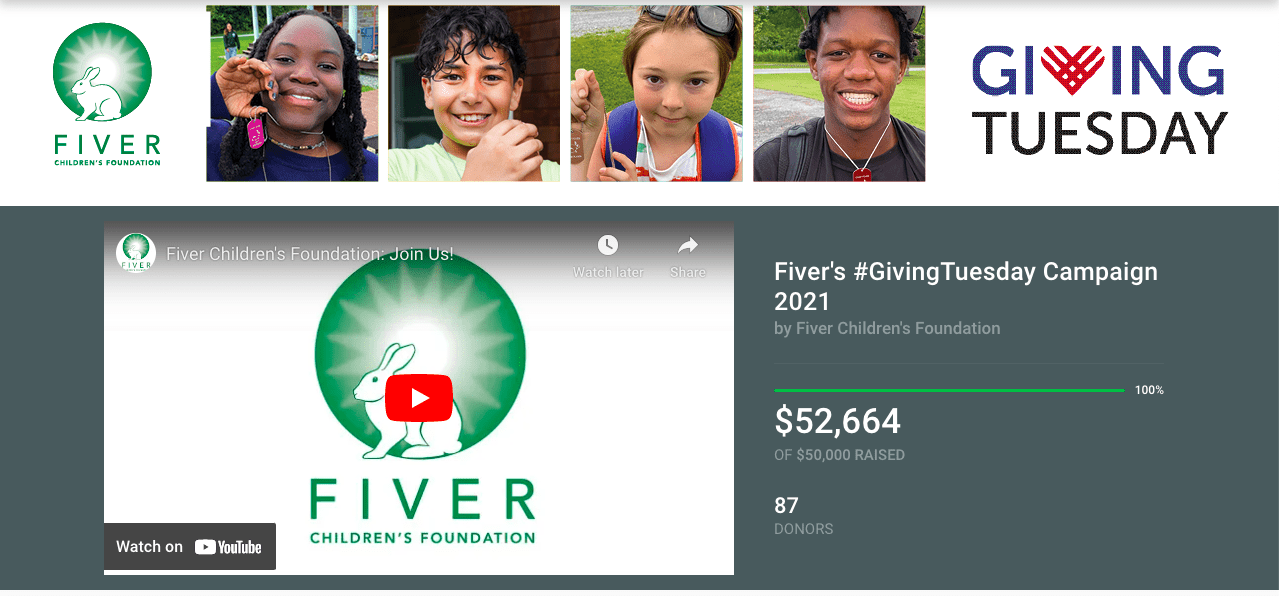
To get the details behind their successes, we spoke to Melissa Benjamin, Fiver’s Director of Development. By focusing on alumni as givers and integrating a GivingTuesday campaign with their year-end strategy they have been incredibly successful. When asked, Melissa mentioned having a strong fundraising strategy begins with having a strong plan in place ahead of time.
The most important thing to determine before developing a strategy for your year-end fundraising campaign is a goal. Goals don’t come out of thin air. They should come from your programmatic needs. Do a review of your annual projections and goals, and look at what you need. Ask these questions:
- Is there a project you want to get funded for immediate use, before the end of the year or early into next year?
- Will the money be used much further down the road?
- Are you funding programs or operations or both?
- What is a realistic goal for the timeline and your community?
- Is it best to create a monetary goal or one based on impact metrics?
- Will you have partner or major donor support through a matching gift?
- What are you expecting to change in the upcoming year?
Your answers to these questions should help you to determine the type of campaign you want to create, and how you do it. A year-end campaign with a goal of $5,000 is much different than one set at $100,000. Urgently-needed funds will also make a difference in your messaging and timeline as opposed to funds that can be used in a year or two.
Ideally, you’ll want to have your plans in process during August and September, with October as your final prep time. For Fiver, one of their big prep steps is getting board members and donors to commit to a large match. That match made a big impact in incentivizing younger donors who tended to give smaller amounts. Thanks to the match, Fiver was able to set an impressive goal of $100,000.
When setting your own goal, use the SMART principles approach, making sure it’s Specific, Measurable, Attainable, Relevant, and Timely. Learn more about this and how to create the fundraising goal that’s right for you in our guide.
Aligning Year-End Giving With GivingTuesday
Without a doubt, the addition of GivingTuesday to the holidays has made a major impact on year-end giving. In 2024, organizations nationwide raised $3.1 billion online on GivingTuesday.
The annual 24-hour giving day, created to counter the retail-heavy push that begins with Black Friday, has thousands of nonprofits, businesses, city governments, and other institutions participating in a drive to highlight generosity and partnership for good.
GivingTuesday is November December 3rd this year, and it’s a prime time for nonprofits to kick off or amp up their year-end campaigns.
We’ve seen many of our own users integrate GivingTuesday into their year-end fundraising campaigns, and we strongly recommend you consider it.
Fiver uses their GivingTuesday campaign to launch their year-end fundraising. This gave them a head start on their larger campaign while helping donors understand the long term goals.
Craft a strong year-end appeal by sourcing your content early. For Fiver, this means pulling client testimonials from thank you letters written by program participants or through phone interviews with families.
The neat thing about Fiver is that there is time is built in for program staff to collect and story bank client testimonials, which means they’re not scrambling at the end. A good story is an incredible tool and whatever quote or story you decide to use, make sure it’s relatable and clear.
As you can see, they ended up surpassing their goal by almost $3,000 in 2020 and 2021!
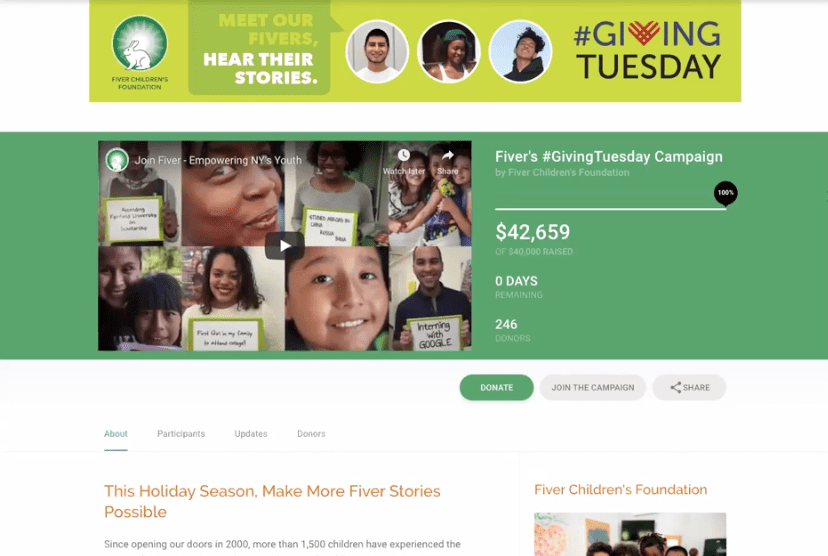
If you’re strapped for resources and don’t have the bandwidth to develop a full-fledged fundraising campaign, GivingTuesday could be a great easy way to get out there and steadily work towards your overall goals.
And if you have a big end-of-year idea or you’re set on your tried and true concept, it still may make sense to incorporate GivingTuesday into your plan. Here’s why:
- Extra attention and spotlight thanks to high publicity around GivingTuesday
- Plug-and-play tools and assets from our free Year-End & GivingTuesday Toolkit and from GivingTuesday.org to help market your campaign
- More participants ultimately means more support for the nonprofit community overall
Download Your Free Year-End & GivingTuesday Fundraising Toolkit:
Whether or not you choose to align your year-end campaign with GivingTuesday, there are many options to consider when plotting the setup. Generally, there are three main approaches to developing a fundraising campaign – no matter the time of year – and all are regularly utilized by nonprofits of all sizes and missions. This is your typical fundraising campaign: it runs for a fixed period of time and has an overall fundraising or impact goal. All donors give to the same umbrella theme and goal through a crowdfunding campaign. However, you may want to consider adding peer-to-peer fundraising onto your campaign so individuals may choose to set a personal fundraising goal to support the overall goal. No bells or whistles — just straightforward. SOS Children’s Villages Illinois acquired 75% of their new donors for the entire year with their year-end peer-to-peer fundraising campaign. Other Examples: This strategy leverages your donors’ personal networks, allowing them to develop their own campaigns, create teams, and share stories to support a larger theme. For organizations whose mission impacts a large number of people in a more direct way (like education or health), this style of year-end fundraising campaign may work best. One incredibly important piece of peer-to-peer fundraising is supporting your fundraisers. It’s a great idea to create a toolkit that your fundraisers can use to guide their work. Provide them with graphics, sample posts, press releases, email templates and more. You can provide a peer-to-peer toolkit like this that has links to all your fundraisers could ever need! Other Examples of peer-to-peer fundraising campaigns could include: An event is a great way to raise funds for your campaign on the spot. For example, Woven Health typically has their annual award ceremony in November, kicking off the year-end giving season. Woven Health Clinic was on their third year of hosting an awards ceremony fundraiser, but in 2020 they did things a bit differently – they went virtual. As a healthcare clinic, COVID made a huge impact on their work, and they weren’t afraid to share that in their campaign. Most of their fundraising happened in the lead-up to their live stream event, and they ended up raising $140,000 doubling their $70,000 goal! Keep in mind that some activities and events can require a lot more time, budget, and staff, so be very thoughtful about what you plan on top of all of your other year-end campaign activities. Moving forward, people may continue to do hybrid events: an in-person event with virtual attendance options. Here’s our tips for planning a hybrid fundraising event. For more ideas and examples of what’s worked for hybrid and virtual events, check out 23 Virtual Fundraising Event Ideas. When it comes to the year-end giving campaign, it’s time to haul out all your best practices and secret strategies, and go all in. Especially for organizations who have major fundraising goals they need to reach to continue operations and programs into the next year — it’s now or never! To that end, there are multiple approaches to consider when developing your strategy, to ensure you’ve covered all the bases and you can get the most bang for your buck. The team at Fiver recognized that their year-end campaign was going to require a lot more effort, and a lot more donors, so they had to kick it up a notch. Fiver casts a wide net with a “mix of their Fiver community” consisting of their young professionals’ committee, mid-career advocates, program alumni, and board members. They also made sure to reach out to supporters with personal asks in order to build a variety of relationships. Here is a list of ways you can cover more ground for your year-end campaign: As we mentioned in the P2P section, your donors’ stories are an essential element to creating a connection to your cause and to reach more potential donors and new community members. Your donors want to hear those stories. They want to know how you’ve stuck with them through thick and thin. You need to be able to illustrate your impact. This inspires donors to give, but also to become a part of the story, which is what keeps their commitment to your cause going, even after the campaign. Here’s how Fiver told their story for their relay: “The Fiver Relay is a longtime tradition at Camp Fiver, where cabins compete in a series of fun, timed activities that are similar to the TV Game Show “Minute to Win It”. This fall, we will bring the fun home, and the whole family can participate virtually for prizes and bragging rights, all while raising funds to support Fiver’s mission of empowering youth.” This might not be the biggest heart-string tugger, but it does help to connect the fundraisers directly to the programs that Fiver provides. It gets families excited to be a part of an ongoing tradition, and pulls in fundraisers to learn more about the Fiver camp program. When coming up with a story for your campaign, consider what kinds of stories connect with your community the best and see what kinds of stories have worked best on social media. Once you know what story you want to tell, consider the Pixar framework: Once upon a time, there was ____________. Every day, _____________. Then one day, __________. Because of that, _________. Because of that, __________. Until finally, ________________. Let’s look at an example from Fiver: Once upon a time, there were students in New York. Every day, these students struggled with self-esteem, grades, expectations, and friends. Then one day, community members began mentoring, tutoring, and providing guidance. Because of that, students know it’s ok to be different. They know how to resist negative peer pressure. They don’t get discouraged. Because of that, these students are graduating high school, entering the work force, and going to college. Until finally, New York has a thriving community of students who see a path to a promising future. But Fiver doesn’t just leave it at that, they invite you, the viewer, to join into the story by donating. They imply that since you are donating, you are there alongside these people, building up the community. Try inserting your story into this framework as well! For more storytelling tips, check out our guide, How To Tell Stories that Connect, Move, And Inspire Everyone. Reaching out to your board is another great avenue to boost your year-end fundraising activity. Engaging individual board members will help you to expand your potential reach by leveraging their personal and professional networks, and it could also provide you with some new content and stories. To start, meet with your board members. Do this one-on-one or take advantage of a board retreat or annual meeting. Seek to understand what drew them to get involved with your organization and issue. Discuss your goals and brainstorm ways they can support your further. Then, ask your board members to make connections. Board members, like any other donor or follower who believes in your work, will likely be happy to connect friends, family, and colleagues with your nonprofit and the work you do. A few introductions from these stakeholders can make a huge difference in your fundraising reach. Finally, involve your board members in showing gratitude. A personal ‘thank you’ to a donor who has contributed a large amount or helped extend your reach can go a long way and a ‘thank you’ from a board member can go even farther. Ask them to compose a quick, hand-written note or an email or see if they can make time for a phone call or even a lunch with top donors. This extra recognition can turn a one-time donor into a regular contributor. Corporate partnerships are a great way to boost fundraising at any time of year but especially at year-end. By partnering with a corporation, you can not only increase your impact but also add incentive for your donors. Partnerships come in all different sizes: they can be as simple as sharing your campaign on social media or as extensive as co-hosting a major event and making a big gift. Retailers and corporations like CVS, H&M, Bank of America, and more have been getting into the GivingTuesday game, and many businesses already find ways to give back during the year-end giving season. If you have a chance to partner with an organization that can bring extra credibility, reach bigger audiences, and help to make a bigger impact, then by all means, go for it. Of course, engaging your corporate partners in donation matching is a great way to engage donors and boost your efforts. A dollar-for-dollar match makes it easy to tell your donors that their gift will have twice the impact. Keep in mind, the average donation during a matching campaign is 51% higher than without! If you haven’t secured a corporate partnership yet, here are some things to consider as you approach one. Not every corporation would make a good partner. The ideal partner for you will be an organization or company that aligns with your brand in some way—be it location, values, goals, or product. The best partnerships benefit everyone involved. Consider ways in which you might help your potential partner as well as they support you as well. Offer to promote them and their work or product by featuring them on your website or sharing on your social channels. Once you have a partnership, remember to nurture it even beyond this year-end time. Reach out, share results and stay in touch throughout the year. Consider the following when developing a partnership agreement: After the campaign, schedule a time to recap and then brainstorm future partnership opportunities. The more you work on this corporate relationship throughout the year the more it will benefit you when next year’s year-end campaign comes around. A wide-reaching year-end campaign strategy is a great way to achieve fundraising success, but don’t discount the contributions of major donors, who are already familiar with your work and interested in contributing to your cause. One of Fiver’s strategies for building a large matching grant was to reach out directly to donors who give year after year. Those donors have already shown commitment to the organization, and that commitment is part of the social proof other donors need to give. Here’s a few ways to get your big donors on board with your year-end campaign: Depending on your goals and your resources, you may use a little from all of these approaches for your year-end campaign, like ENGAGE did in Seattle, when their peer-to-peer fundraising challenge culminated in a board game tournament. They raised $92,000 to feed families in the Seattle area, more than tripling their original goal. The combination of a set goal, peer and team fundraising, and a live event brought together many tried and true fundraising tactics, with a creative twist. Your year-end fundraising campaign should be a mix of what works for your organization, what will resonate with your community, and what will make the most impact for your goals. A huge element to a successful year-end giving campaign, like any other, is marketing and communications – but perhaps it’s even more important during this busy time of year. As we mentioned before, between retail promotions and most nonprofits working towards end-of-year sales and donation goals, and people keeping busy during the holidays, it can be really tough to stand out with your message and mission. But that doesn’t always mean that your marketing has to be totally unique and something new; it just means it has to be solid and strategic. Many organizations run the same year-end campaign again and again, some for decades. Think Salvation Army and their Red Kettle campaign, or Oxfam International and their catalogue of goats and other farm animals. These nonprofits have brand recognition and they have stayed true to their mission and to a campaign that works. While we know that not all orgs have this same brand awareness, we believe that less can be more, that simple can be best. As always, you should craft a plan for your campaign that you know works for your audience, and tells your story as clearly as possible, however that may be. To that end, there are some fundamentals to keep in mind when developing your marketing and communications strategy for each medium. No matter what else you do, your organization’s website should clearly display your year-end fundraising campaign. There should be no question when someone visits your homepage that you have a campaign in progress, and within a few seconds, you should be able to determine the campaign theme, goal, and how to support it. Even if you are sending visitors off to social media or a third-party fundraising site, it’s important that your website introduce potential donors to your campaign quickly and efficiently. Here are some ways to do so: For many nonprofits, especially small ones, email continues to be a main driver for action and fundraising. Even if your campaign is heavy on social media, it’s still a good idea to include at least a couple of emails to your list for your year-end campaign – at a minimum, one to launch, one to provide an update and make a second ask, and one at the end. In addition to reaching people who may not be following your organization on social media, email can be a great way to do deeper storytelling for your campaign, and give more details around the impact you’re hoping to make. Try to be creative with your subject lines (see our 50+ suggestions for year-end email subject lines here) and think about the design and layout of your emails, too, to keep readers’ attention and boost your open and click rates. One of the most powerful parts of online fundraising is segmentation. You can segment your emails based on the donor or engagement level, ranging from folks who have signed up for emails only all the way up to major donors. Within these segments, tailor content and the appropriate call-to-action to move them up to the next level. You can also use this kind of segmentation to build onboarding emails with a particular theme and message throughout the season. This introduces new donors to the community and educates them about the issue and ways to get involved. Here are some email options to consider for your year-end campaign: Thank you’s, updates, and miscellany More than ever, nonprofits are using social media as a way to market their year-end giving campaigns, or as a way to elicit engagement. For some, social media is one of the main ways supporters can take action for their cause. Social media is certainly one of the easiest and (free) ways to promote your year-end campaign. That being said, you don’t want to just put out a Tweet and Facebook post and call it a day. It’s important to create a plan and be strategic with your social media outreach and engagement, no matter if it’s a central element to your campaign or just as a way to promote it. In the example below, Fiver used the GivingTuesday hashtag, specific numbers to illustrate their impact, a sense of urgency, and a direct CTA. The photo helps, too. Keep these best practices in mind for your year-end campaign: Branding: Match content to the appropriate platform: Time it just right: Take a look at some other social media tips that can work for a GivingTuesday campaign, or a year-end one, or both. Newer marketing platforms aside, traditional media outreach can still be a great way to market your year-end campaign. In fact, so many bloggers, reporters, and other media professionals use social media now to find news and break news that you should consider reaching out to them on your chosen social communities to share what your organization is doing. Tools and resources like Help A Reporter Out and the Public Insights Network make it easier for journalists to get the stories they need. While you may not want or be able to develop a comprehensive public relations plan, we have a few options to include at a minimum to get you started. Whether or not you do any direct media outreach, it’s important to have a press or media kit ready for any outlet that wants to feature you. Prepare important campaign collateral like logos, graphics, photos, and more, and use an easy to access service like Dropbox or Google Drive for file uploads, viewing, and sharing. You could implement all of the options in this section, and there is still more you could do to boost your marketing and communications for year-end fundraising in 2024. If you have the budget and bandwidth, you could consider advertising on social media or through local channels, you could line up interviews with your organization stakeholders, or you could host a volunteer activity or a fundraising meetup. Many organizations still send direct mail appeals, too. While much focus is moving toward digital, direct mail still has a place. More and more organizations have stopped sending out direct mail, so it can be a good opportunity for you to stand out. Be creative when thinking about how to reach new donors and how to tell your story in a way that will compel donations. Keep in mind donor behavior, holiday schedules, and what tends to resonate at this time of year. So here we are – so much to do, and so little time! If you haven’t gotten started on your year-end campaign yet, let’s get to it. At CauseVox, we’re ready to get you up and going on a custom-made, easy-to-use fundraising website in just minutes. And this guide is just the beginning of all of the resources out there to help you create and execute a successful year-end giving campaign, starting today.
Here are some other places to find more ideas, more tactics, and more tips: CauseVox makes it easy for you to run a year-end campaign that’s designed to help you get more donors. We make it easy for you to setup and brand your campaign with less effort. Plus, all of our forms are conversion-optimized, mobile-optimized, and support 1-click mobile payments (with Apple, Google Pay, and more), so you’ll get more donations through your site. If you’re looking to power your campaign, you can get started with CauseVox for free. This post was last updated in September 2024.Choosing Your Fundraising Approach
General Fundraising Campaign:
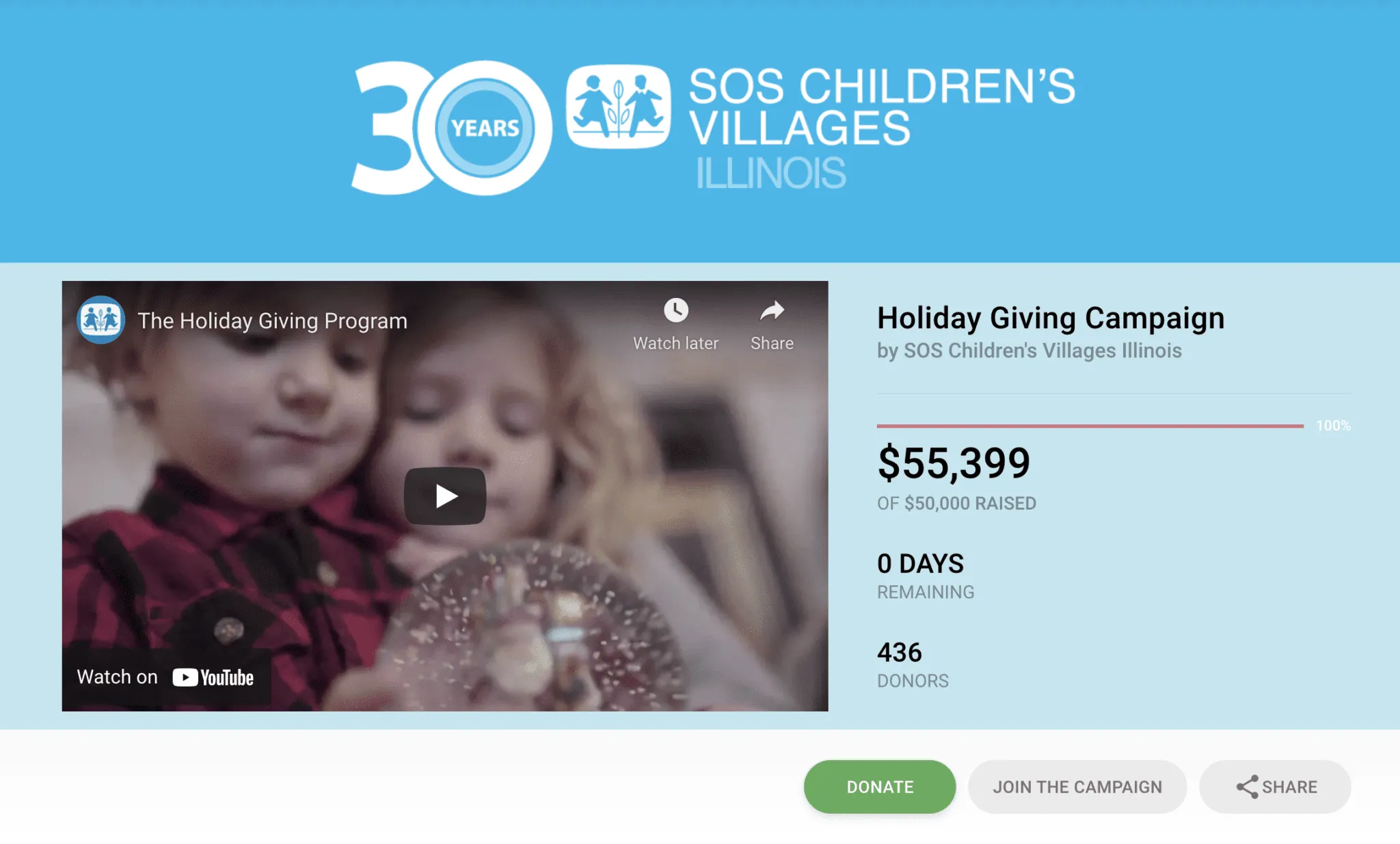
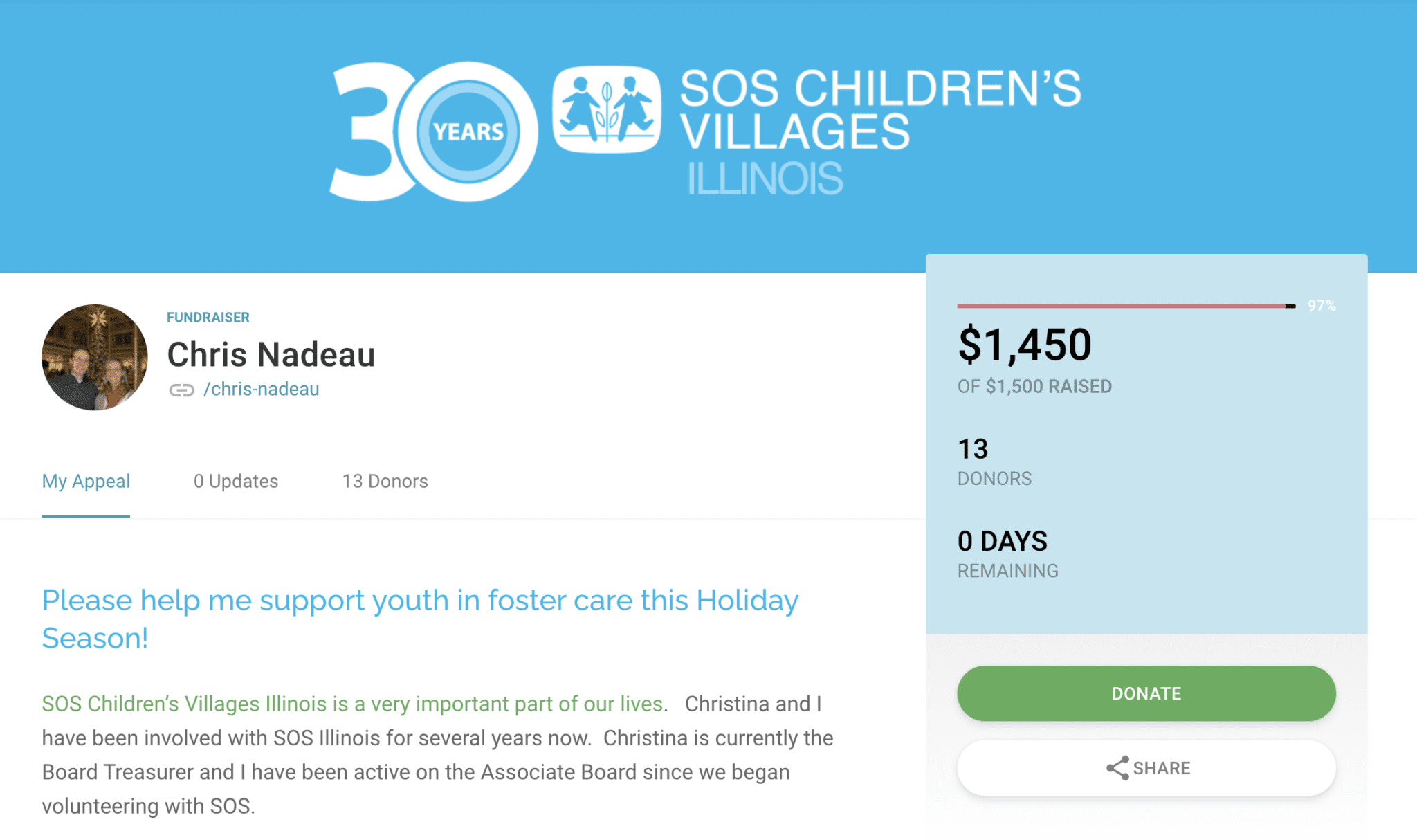
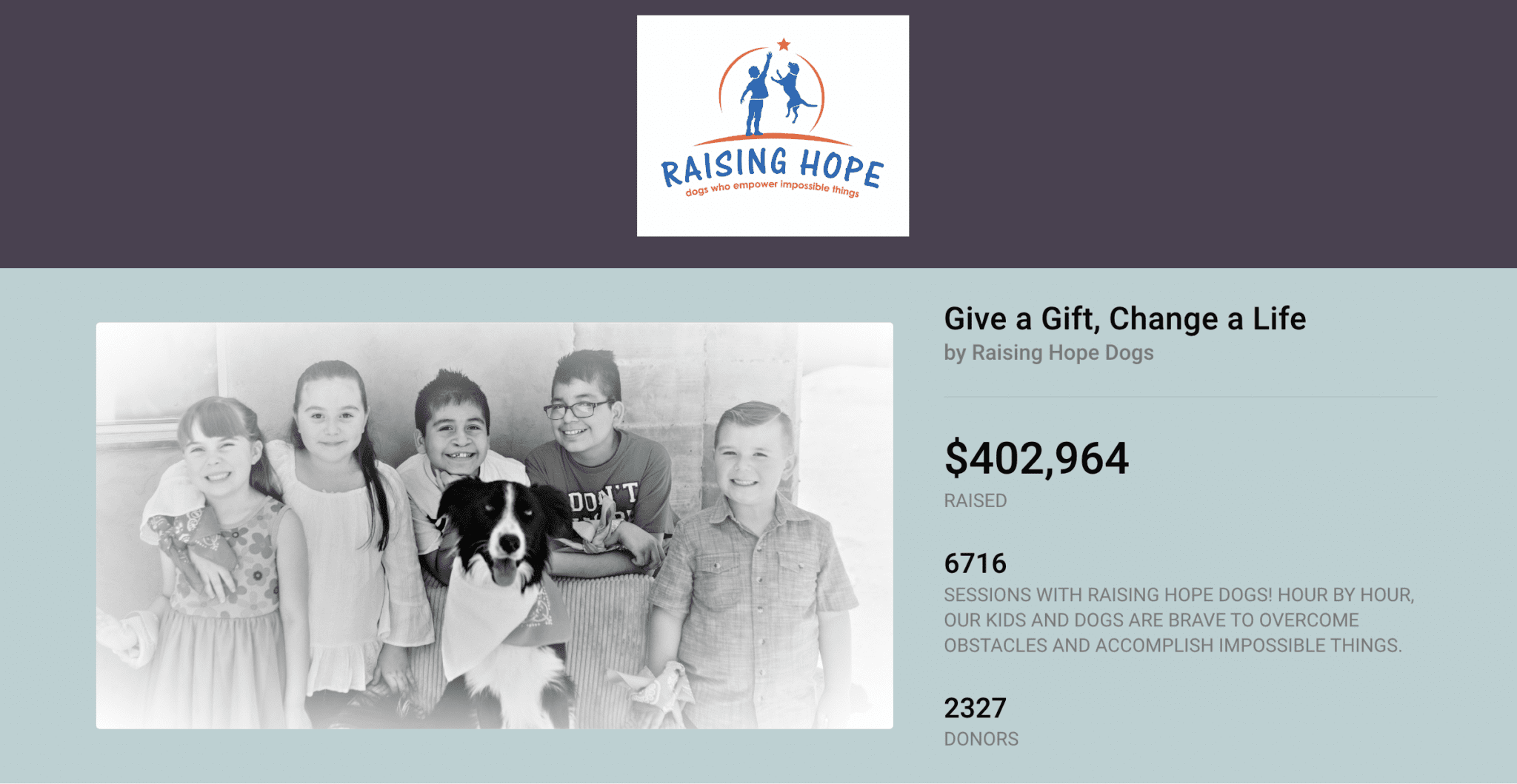
Peer-to-Peer Fundraising:
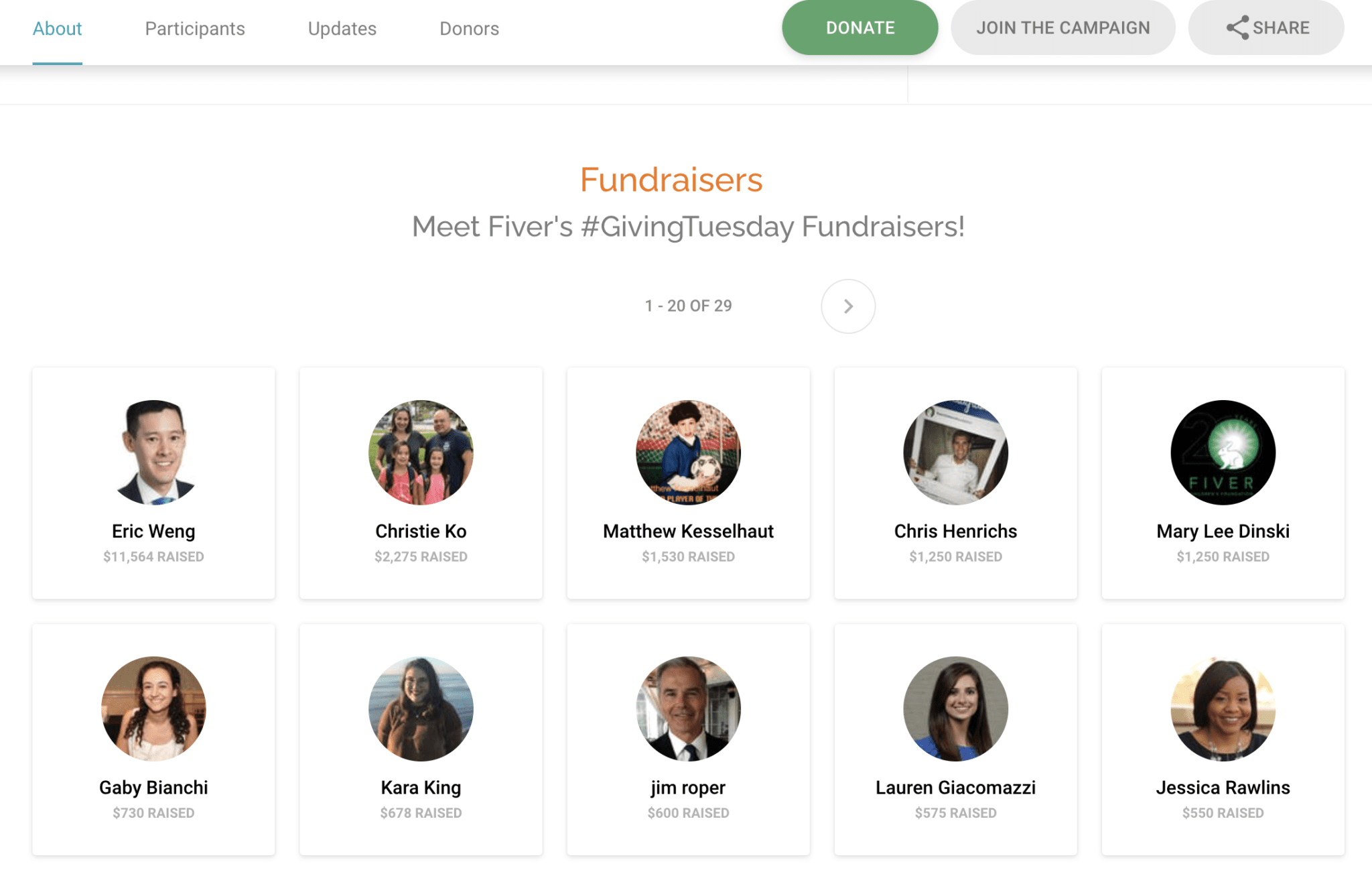
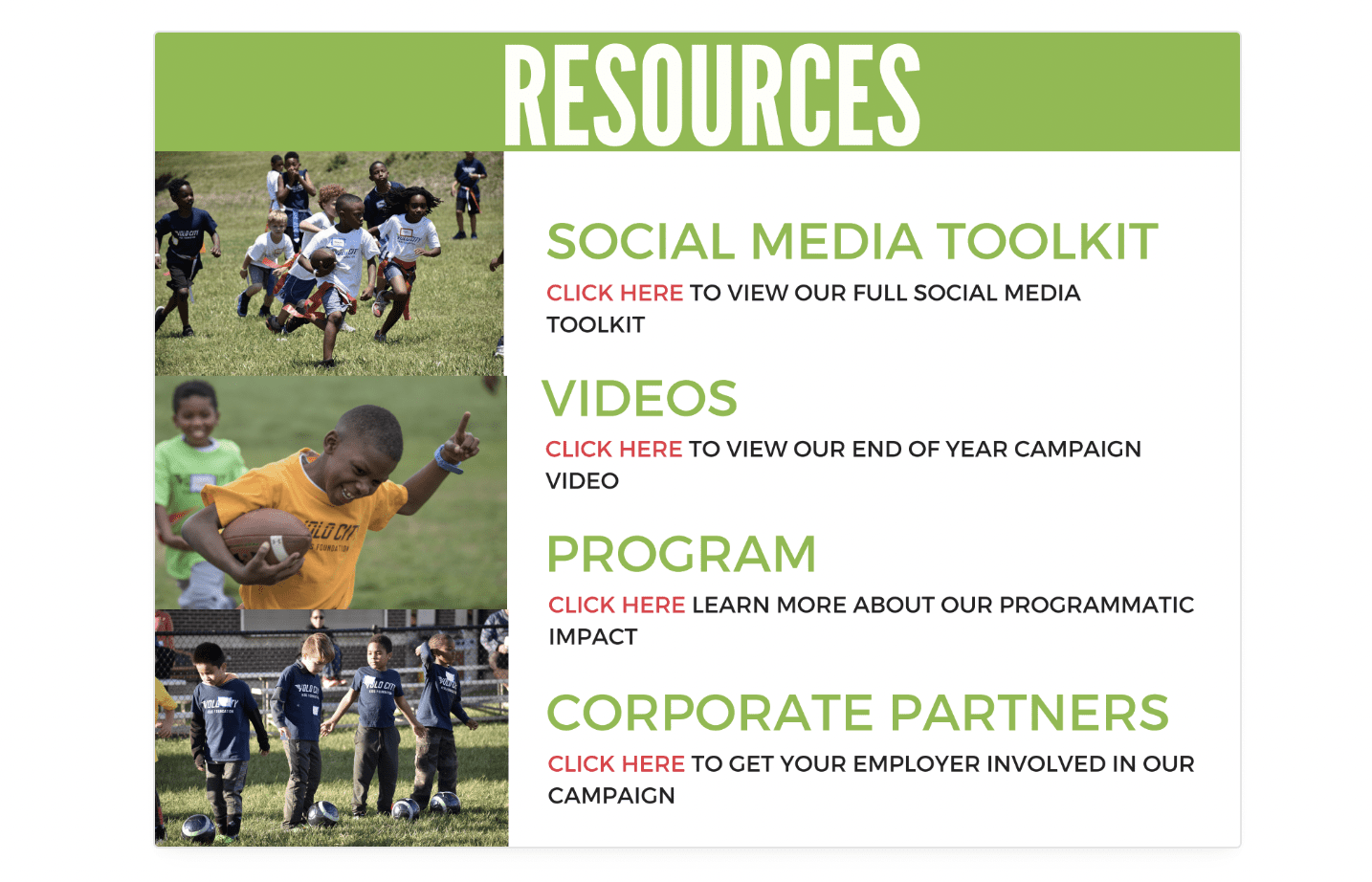
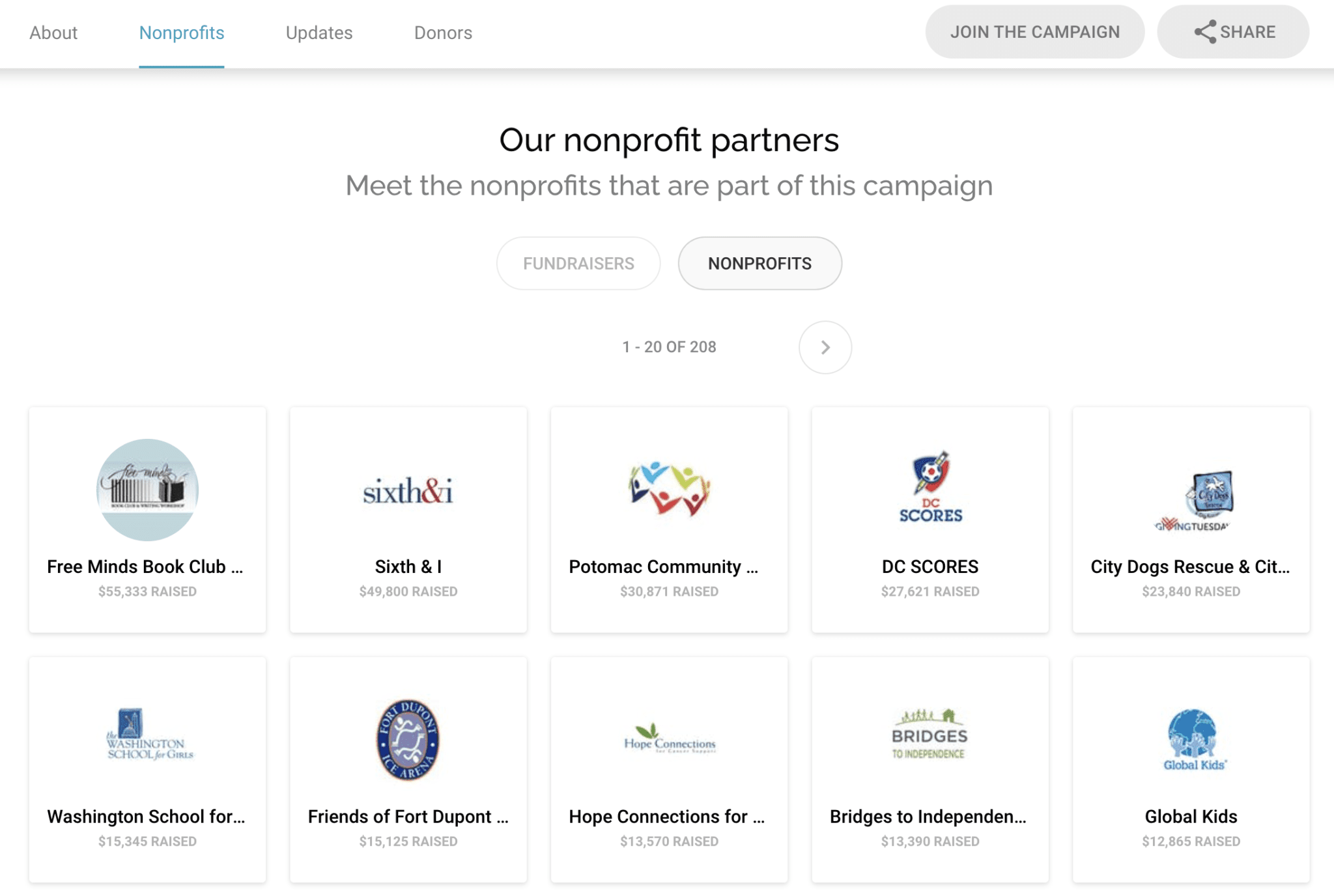
Activity or Event:
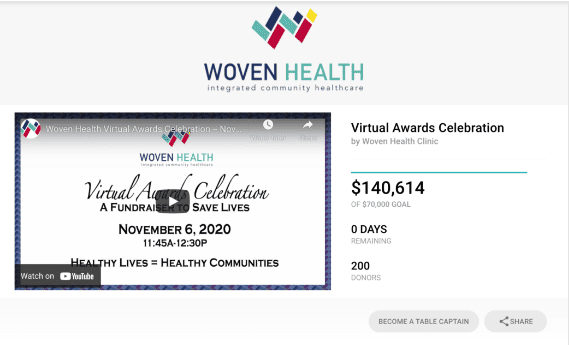
Developing A Year-End Campaign Strategy
Share Your Story
Engaging Your Board In Year-End Fundraising
Establishing Corporate Partnerships
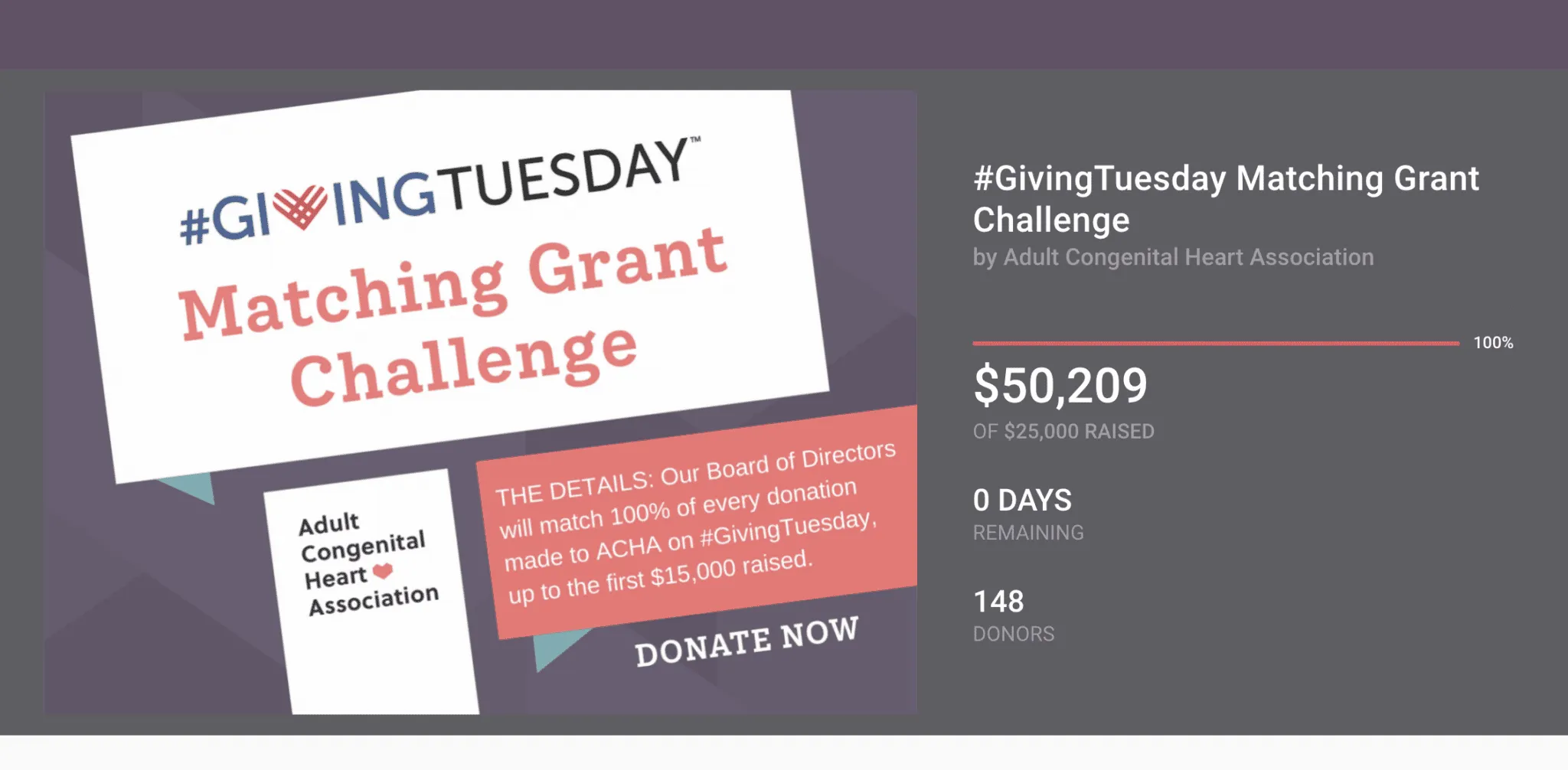
Choose a partner that makes sense for you.
Make it mutually beneficial.
Manage and maintain the relationship.
Create a toolkit
Be specific
Make the most of their brand
Reach Out to Major Donors
All Systems Go
Marketing & Communications For Year-End Giving
Website
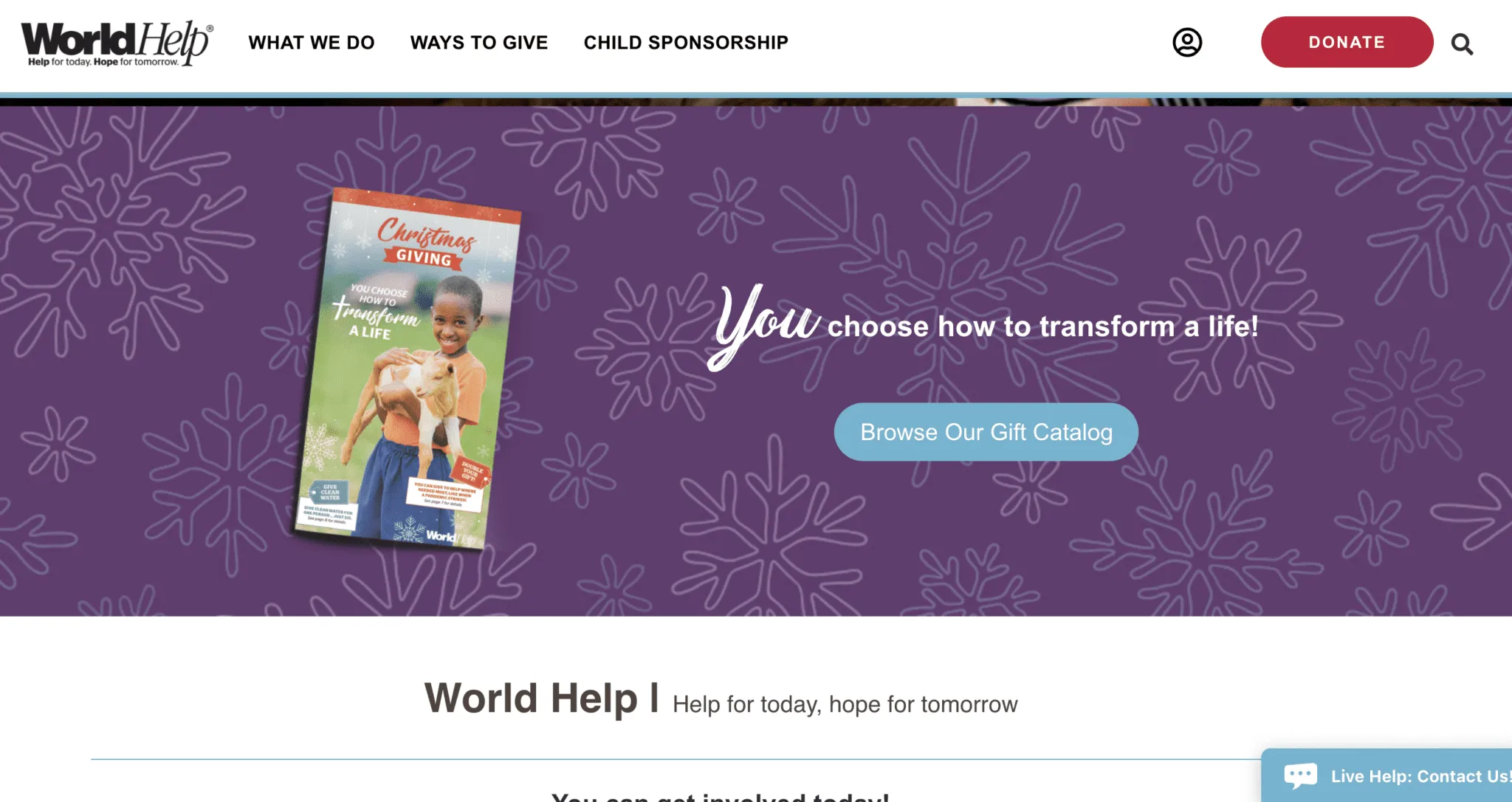
Homepage
Campaign Page
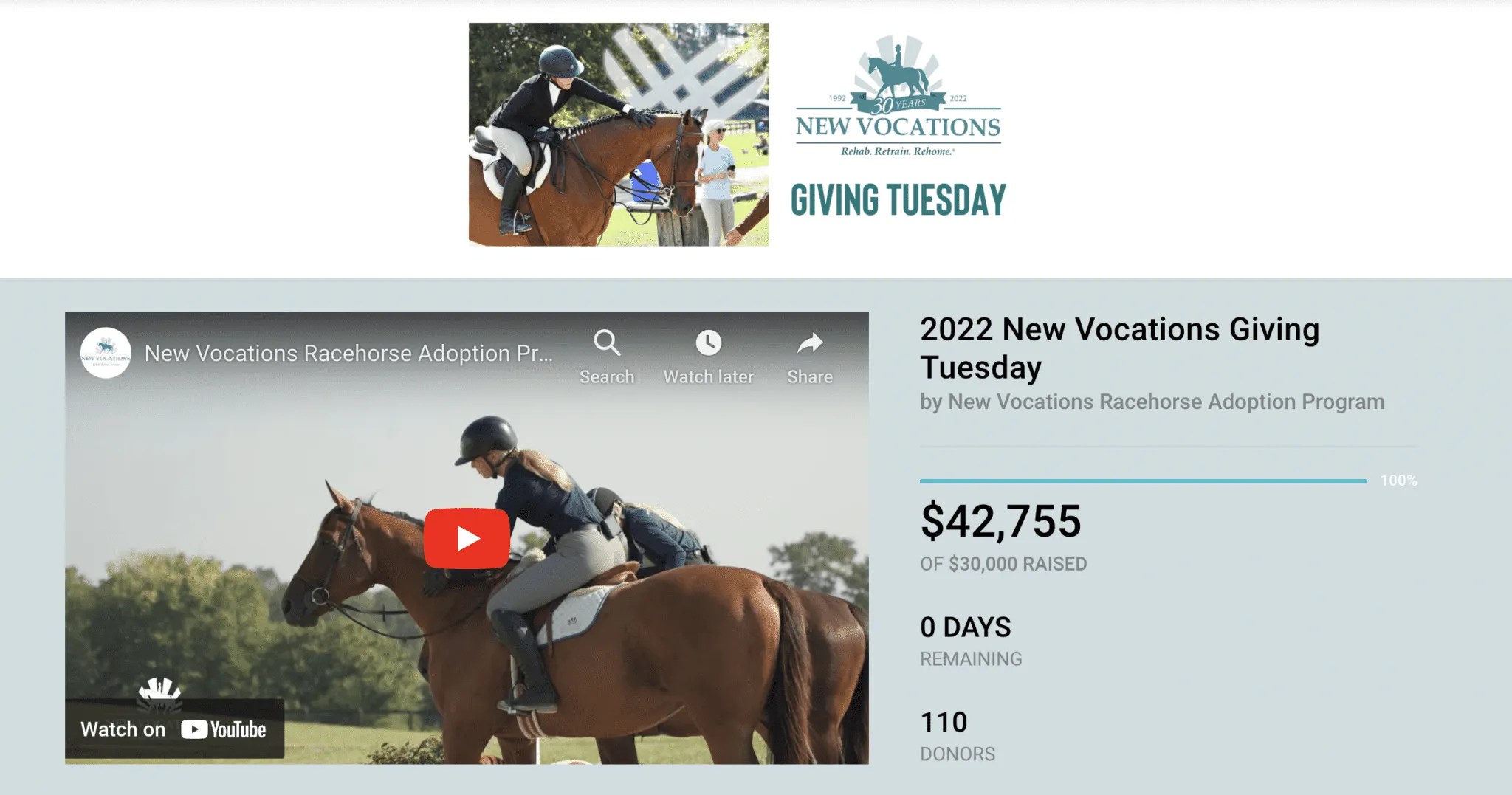
Content
Year-End Fundraising Email Campaign
Direct donation ask
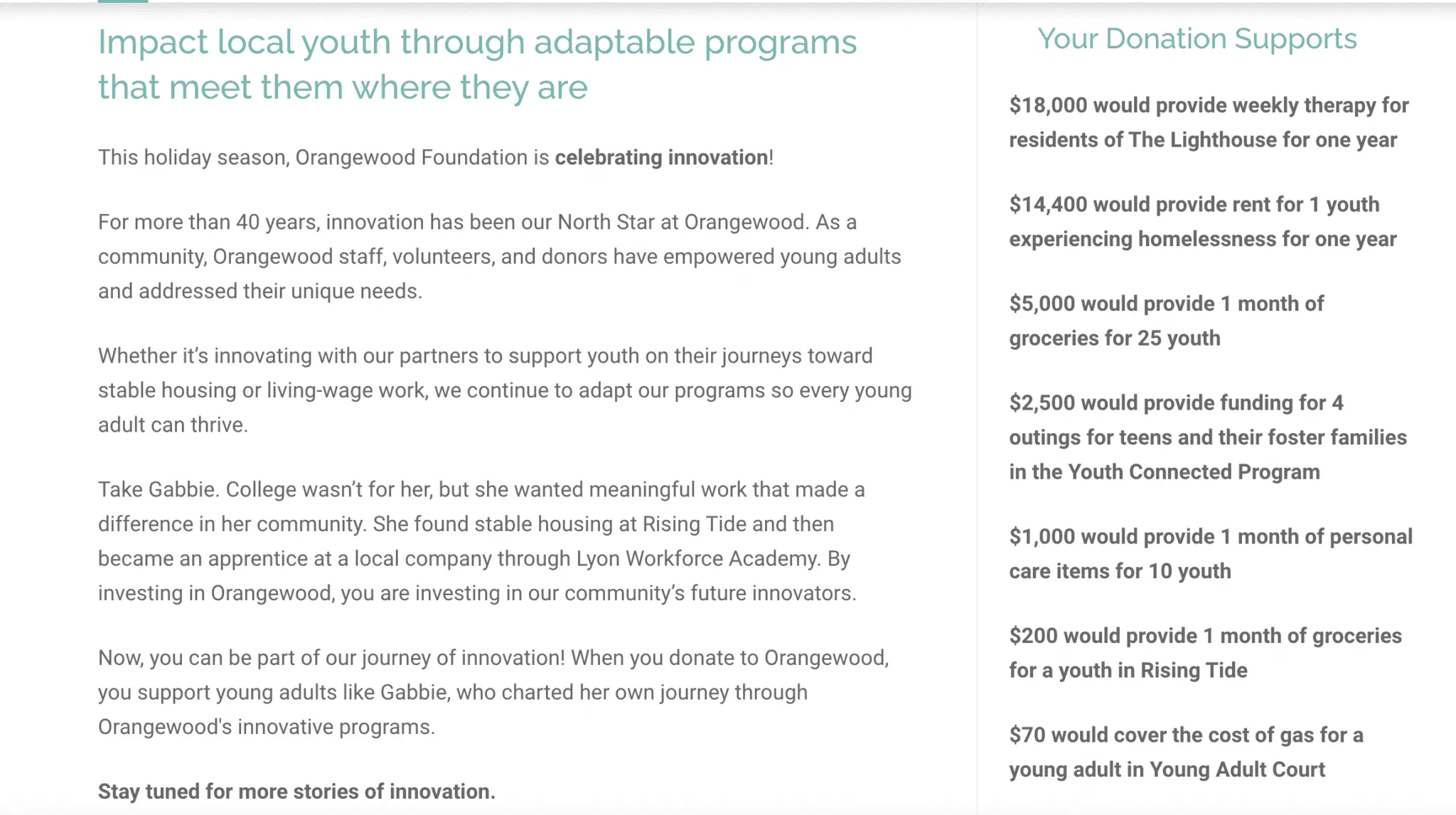
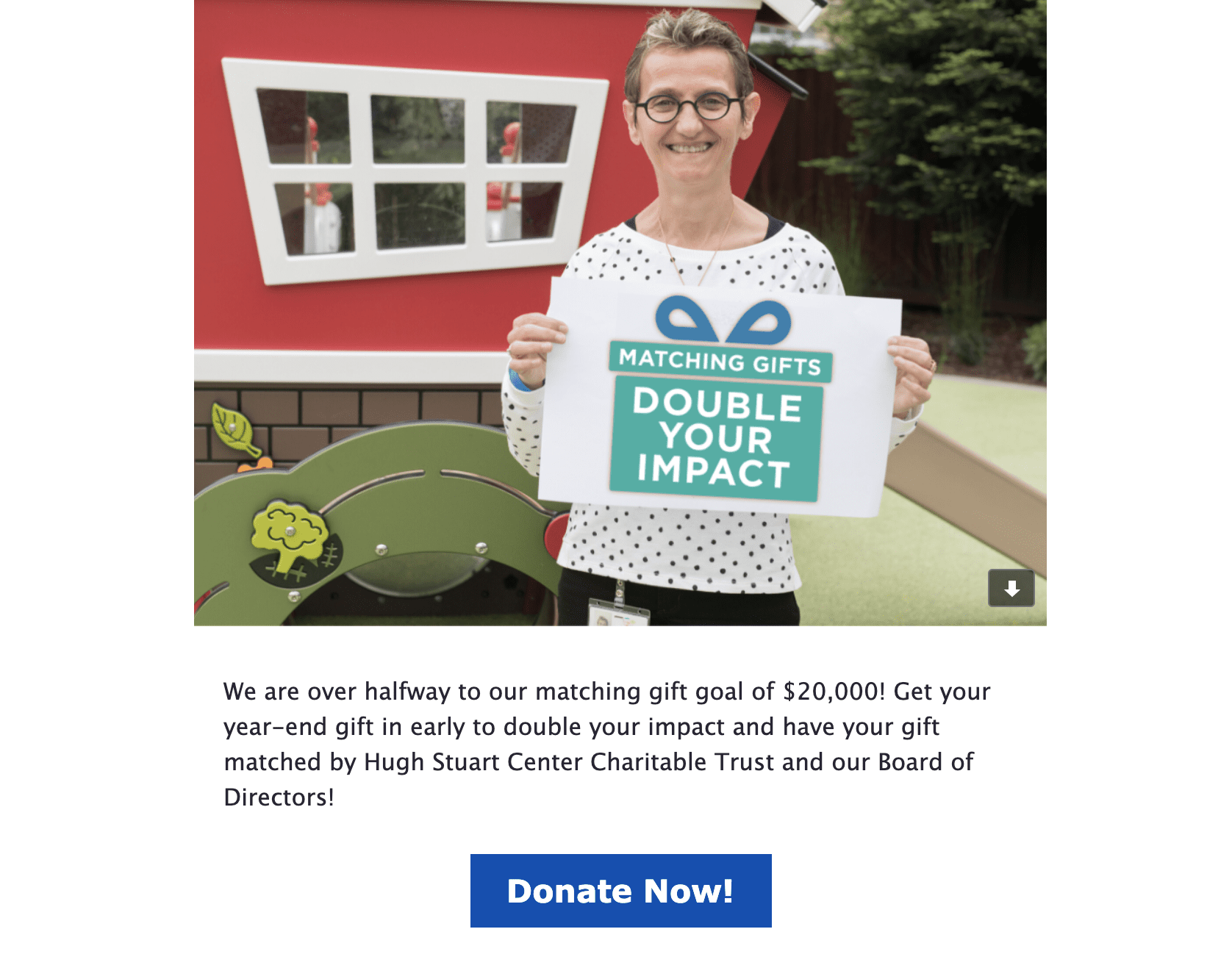
Storytelling
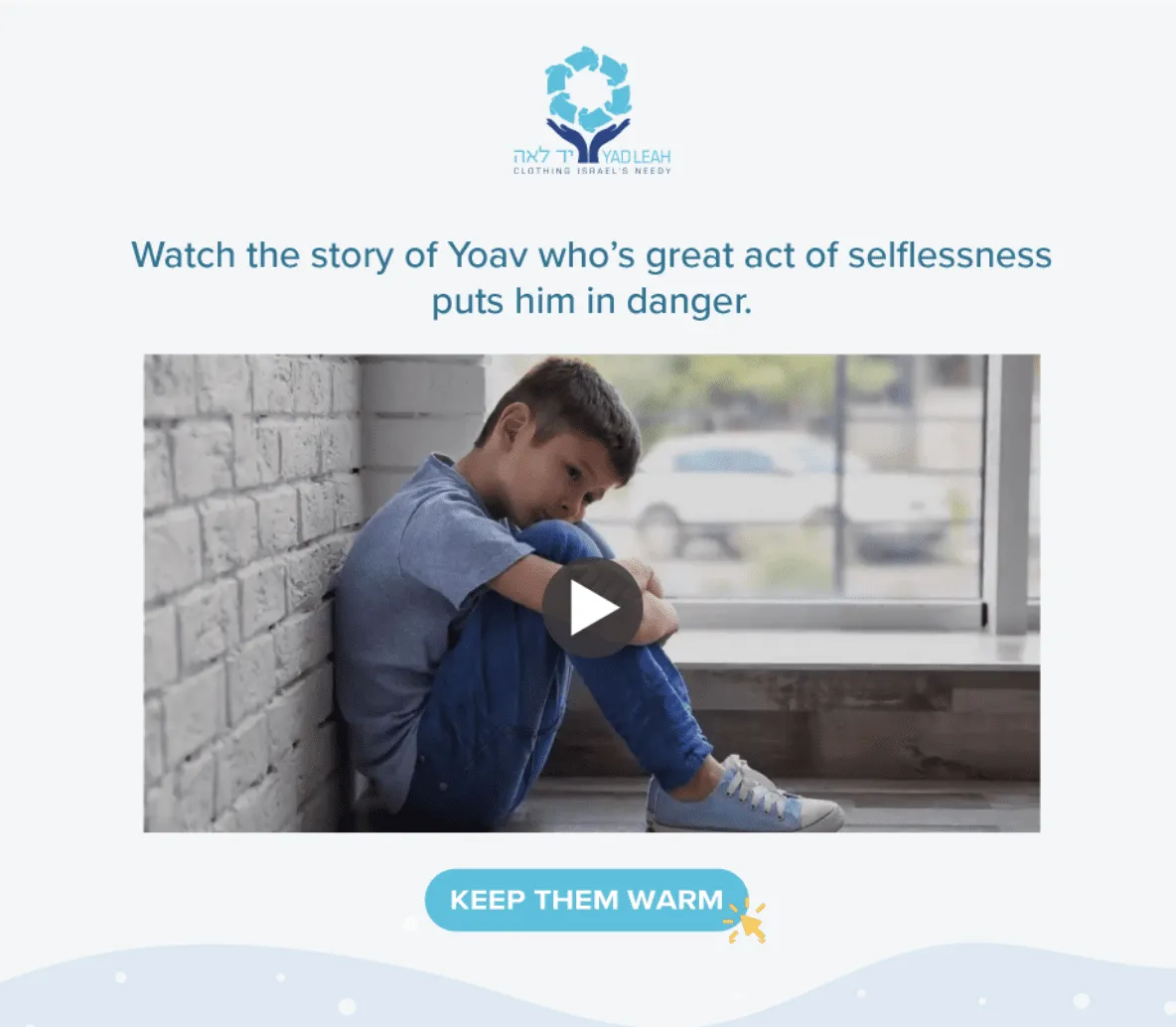
Social Media For Year-End Fundraising
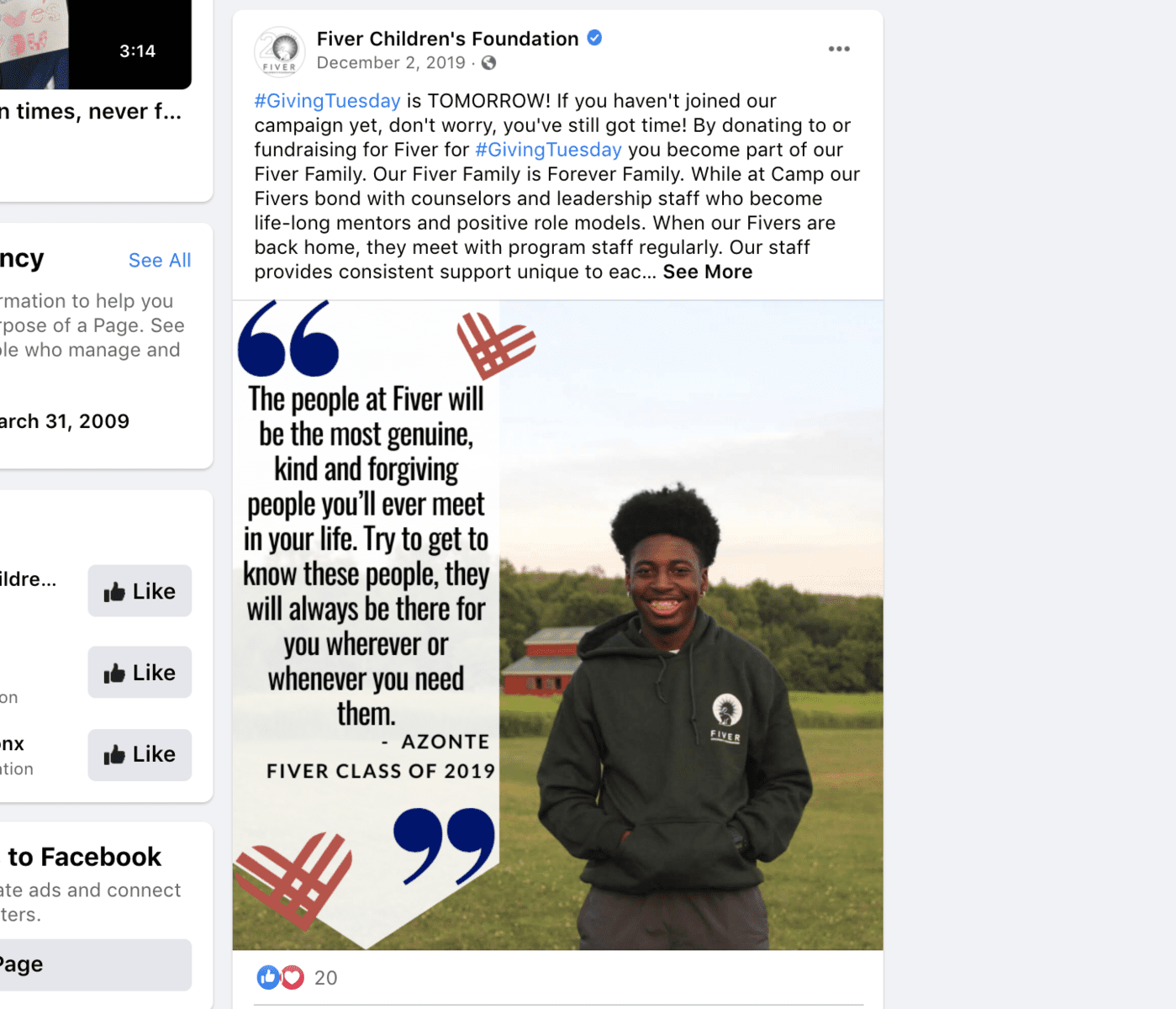
Public Relations And Outreach
Compile a blogger list
To release or not to release?
Offer an exclusive to one outlet
Other (advertising, events, print, etc.)
Getting Started
View and download our Year-End Fundraising Sample Plan + Calendar by inputting your email address below:
Raise More With Less Effort This Year-End With CauseVox
